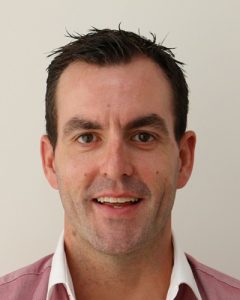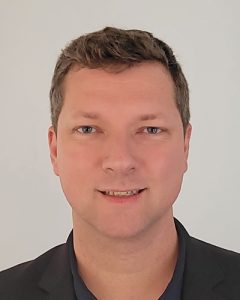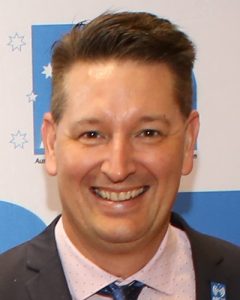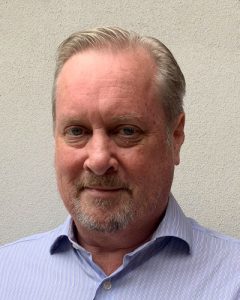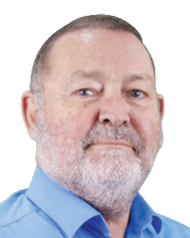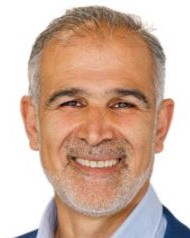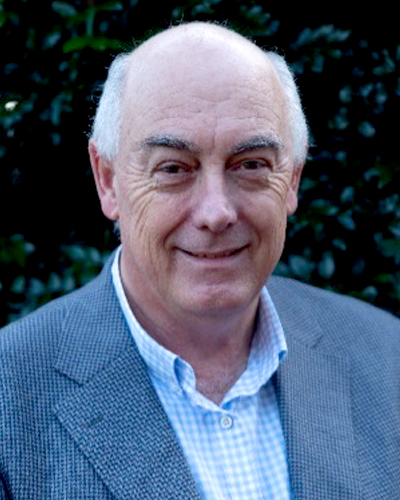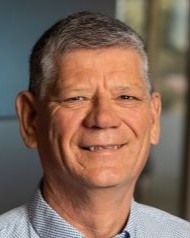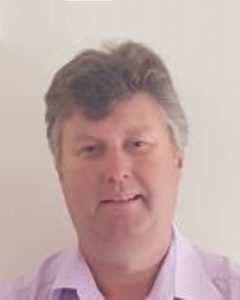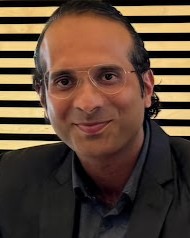Critical Communications Conference: Perth, 2 – 3 April 2025

Following a fantastic conference in 2024, we return to Perth in April 2025, with an expanded program that now includes pre-conference workshops on Wednesday, 2 April.
In response to the growing demand for additional training, we’ve added pre-conference workshops to our 2025 conference lineup. Workshops are available to book in addition to the conference program and WA State Networking Dinner.
Book your Workshops, Conference and Dinner tickets now >>
IMPORTANT- ARCIA Partners have been sent a code to book tickets — Contact us for more information >>
The Perth conference features a jam-packed stream of critical communications presentations, closing out with an expert panel.
The WA State Networking Dinner will be held in the evening following the conference where the highly anticipated WA State Professional of the Year Award winner will be announced. Nominations are now open and will close on Friday, 7 March 2025 – Nominate now.
Numbers are strictly limited due to venue capacity for the conference and the dinner, so book your seats for you and your colleagues ASAP. Discounts apply on all rates for current ARCIA Members. Not a member yet? Join ARCIA now >>
Workshops: Wednesday 2 April, 2025
Conference and State Networking Dinner: Thursday 3 April, 2025
Venue: Aloft Perth Hotel in Rivervale
Time: 9:00 AM- 5:00 PM (Workshops and Conference) 6:00 PM -10:30 PM (State Networking Dinner)
Agenda: Download Agenda >>
Half-day workshops | W1 9:00am – 12:30pm and W2 1:30pm – 5pm
- Workshop 1 | Private Cellular Networks (4G/5G) – The Fundamentals of the Technology and System Designs
- Workshop 2 | The TAK Imperative: Why Australian Mission Operations will Embrace this Unifying Common Operating Picture
Conference stream | 9:00 am-5:00pm
- How Public Safety Agencies Optimised Critical Comms During the Paris Olympics
- Digital LMR and Location Services – Battle of the Titans
- Starlink Direct to Cell – The New Zealand Experience and the Impact & Opportunity for Australian LMR Users
- AI, IoT & LoRaWAN: Transforming Ultra-Early Fire Detection for Forestry, Infrastructure, and Climate Resilience
- Pathways to Deploy 3GPP Mission Critical Broadband Services (MCX), with Icon Water (ACT) Case Study “Move from Narrowband to Broadband”
- Navigating Australia’s Airwaves – Exploring Spectrum Opportunities
- Standards Progress for LMR to Hybrid Narrowband & MCPTT Solutions
- A Brief Look Under the Bonnet of TAK – Operations with an Interoperable, Unified Common Operating Picture
- Resilience in Engineering Design
Panel Discussion
- The Use of Satellite Communications in the Critical Communications Environment – Separating Fact from Fiction
Book your Workshops, Conference and Dinner tickets now >>
Stay updated on event information by following us on LinkedIn or subscribe to our Mailing List.
Perth 2025 Half-day workshops
Workshop 1 | Private Cellular Networks (4G/5G) – The Fundamentals of the Technology and System Designs
Wednesday 2 April | 9.00 AM – 12.30 PM
Presented by: Simon Lardner | Head of Wireless Business, Vocus
This workshop is an introduction to the technical and commercial framework behind private cellular networks. It will provide students with the skills to be able to outline the key elements and components of a typical private cellular network . Students will gain an understanding of the fundamental drivers behind the technology, as well as the key elements behind developing a business case for network deployment. Students will be able to describe the evolution from 4G to 5G, along with the associated migration paths.
The course will cover:
- Background to cellular networks (1G to 5G) and the fundamental philosophies behind them.
- Differences between Public/consumer cellular networks and private/industrial networks.
- The technical and commercial benefits and limitations of industrial cellular networks.
- The architecture of private cellular networks.
- The complexities and issues especially associated with 4G/5G Public Safety networks
- Basic solution system design & the building blocks of a solution.
- An analysis of 5G compared to 4G, along with the migration paths available to network owners.
This course is for students who:
- Come from both a technical and non-technical background.
- Have been to the previous ARCIA training sessions on Private Cellular Networks, or have a prior fundamental understanding, and want to understand the latest industry developments in 5G and it’s potential impacts.
- Are interested in their organisation building a Private Network and want to understand how to go about it.
- Already have a 4G private network and are interested in the what or how of a 5G network.
- Want to separate vendor hype from technical and commercial reality.
——————————————————————————————————————————————————-
Workshop 2 | The TAK Imperative: Why Australian Mission Operations will Embrace this Unifying Common Operating Picture
Wednesday 2 April |1.30 PM – 5.00 PM
Presented by: Graham Tait | Mesh Solutions Lead, Hypha, and Neil Jamieson |Group CEO, Hypha and Matt Franks | Senior Solutions Engineer, Hypha
As we explore TAK (Team Awareness Kit) to understand what it is, its opportunity for application and explore various use cases, this workshop will be an opportunity to hear from the experts and experience some hands-on training with TAK.
TAK delivers an interoperable unified common operating picture (COP) based on non-proprietary, open-source software developed and continuously updated by the US Department of Defence.
Australian public safety agencies and emergency management organisations can embrace the civilian TAK stream as a unified operational picture, that fits in the hands of remote emergency workers and is also available to benefit private-sector users too, including park operations, marathon and festival organisers and other large events and operations.
Hear how this life saving approach to technology use can serve Australia:
- Hear about strategies for deploying TAK on an enterprise scale, from device selection to end user training and adoption
- Observe in-depth case studies on the use of TAK for special events, law enforcement tactical operations, wildland firefighting, and search and rescue
- Learn about the large range of communications options for using TAK in remote/off-the-grid conditions
- Discuss the inclusion of TAK in interoperable communications planning, as a compliment to P25 radio, and as a scalable alternative to proprietary silos
Perth 2025 Conference Stream | 9:00am – 5:00pm
If you would like to be the first to know about conference announcements, follow us on LinkedIn or subscribe to our Mailing List.
How Public Safety Agencies Optimised Critical Comms During the Paris Olympics
Presented by: Brad Welch | General Manager, TPL Systems
Public Safety agencies and other organisations that rely on critical communications for their emergency and day to day operations are embracing hybrid solutions in order to strengthen communications resilience. As Public Safety dedicated broadband solutions are being implemented around the world, MCPTT is becoming a large part of the hybrid solution, in conjunction with traditional Land Mobile Radio as the backbone of their communications architecture.
Although radio manufacturers are combining these technologies in their radio hardware, there are still alot of legacy radios only working on traditional radio platforms, so users are forced to use multiple devices to take advantage of radio and MCPTT platforms. This is the exact scenario that was faced by the French Police and Gendarmerie leading into the 2024 Paris Olympics, with both TETRA radios and a mobile phone based MCPTT app forming the hybrid communications platform for over 28,000 officers.
Although the addition of the MCPTT app added a more robust communications solution, it added user complexity too, as officers had to use and carry multiple accessories for voice communications. In this presentation we investigate how this issue was overcome to provide secure and seamless communication across various public safety units.
———————————————————————————————————————————-
Digital LMR and Location Services – Battle of the Titans
Presented by: David Ross | Senior Software Engineer, Omnitronics
This session will explore the diverse range of Location Services offered by both DMR and P25 systems. The presentation will delve into the features of these services and describe the necessary system elements required to provide dispatch operators and other systems with accurate location reports.
Attendees will get to understand the distinct operational ‘modes’ of both technologies – ‘trunked’ and ‘conventional’ – and discover how these modes influence the location services provided. Deploying these features in extensive networks, comprising hundreds or even thousands of subscriber units, requires careful dimensioning due to the very limited bandwidth ‘over the air’.
The presentation will also examine the trade-offs, such as polling periods, event triggers, and features like ‘Location on PTT’ and ‘On Demand Location Query,’ that shape this critical dimensioning landscape.
———————————————————————————————————————————-
Starlink Direct to Cell – The New Zealand Experience and the Impact & Opportunity for Australian LMR Users
Presented by: Andrew Thompson | CEO and Founder, RF Fresh
Starlink Direct to Cell (“DTC”) technology is moving at a rapid pace and is likely to be the most profound change to mobile communications (data and voice) since the introduction of GSM. From launchpad to being operational in LEO as a DTC cell tower is about 2 hours. In 2024, 300 DTC capable satellites were launched. Those 300 satellites provided a global constellation enabling SMS and IoT data anywhere, and in real-world practical terms, at any time – a global network in 1 year. By May 2025 there will be 600 DTC satellites and depending on Starship launches, there could be 1,200 by the end of 2025, with corresponding very low latency levels.
OneNZ are the first telco in the world to release a commercial product based on the Starlink Direct to Cell network, initially SMS and now IoT data. As a result of both their experience working with SWARM satellite and low speed networks such as radio, the FreshRF/APIS teams have been working closely with OneNZ and Starlink to roll out a commercially viable IoT solution for commercial beekeepers, along with general remote sensing. Their IoT solution was deployed for commercial beta with customers at the end of 2024, and was due to be commercially released by mid-February 2025. In Australia both Optus and Telstra have signed carrier agreements with Starlink and will be releasing end user DTC SMS, IoT Data and Voice plans in 2025.
With DTC cell towers spinning around the world at 26,000km/hr, coming and going at different RSRP levels and for (somewhat uncertain) periods of time, maintaining connectivity and latency to support SMS, Data, and Voice has been at best challenging, with a huge number of lessons learnt.
As a result of both our radio experience, early and ongoing work on DTC with carriers and Starlink, FreshRF have a unique and practical perspective on how DTC might affect and compliment 2-way radio in 2025. This session will therefore cover past experience, what we expect to see going forward in the next 6-12 months, and the possible implications and opportunities for two-way radio users and dealers.
———————————————————————————————————————————-
AI, IoT & LoRaWAN: Transforming Ultra-Early Fire Detection for Forestry, Infrastructure, and Climate Resilience
Presented by: Sohan Domingo | Vice President Sales Technology and Operations, Dryad Networks
As climate change accelerates, bushfires and industrial fires pose a growing threat to critical infrastructure, including power grids, communications networks, and industrial assets. The challenge lies not only in fire prevention, but also in ensuring continuous, reliable monitoring in remote and high-risk locations.
As an example, in this session, we explore how AI-driven, solar-powered sensors leveraging LoRaWAN—a critical unlicensed network for IoT—can transform ultra-early fire detection. This technology not only protects forestry from destructive bushfires but also safeguards essential infrastructure from fire-related damage. By detecting fires at their smoldering phase, LoRaWAN-enabled sensors can provide real-time, long-range, and cost-effective monitoring, without relying on traditional communications networks.
Discover how AI, IoT, and LoRaWAN are revolutionizing fire prevention, risk mitigation, and climate resilience—helping governments and industries protect assets, reduce economic losses, and move toward a net-zero future.
———————————————————————————————————————————-
Pathways to Deploy 3GPP Mission Critical Broadband Services (MCX), with Icon Water (ACT) Case Study “Move from Narrowband to Broadband”
Presented by: Faz Moradi | Director, Client Solutions and Strategic Partnerships, Motorola Solutions Australia and New Zealand and Director of ACCF
The presentation provides an introduction and overview of current 3GPP releases of mission critical broadband, along with the current 3GPP work schedule that includes 5G D2D Sidelink, Massive MC Video and IWF between LMR and Broadband systems. It will also include an overview of MCX interoperability testing (ETSI Plugtests) and certification. As an example of moving from narrowband technologies to critical broadband, the presentation will provide an Australian case study from an Icon Water (ACT) project entitled, “The Move from Narrowband to Broadband” that provides Icon Water with efficient and enhanced operational communication, improved safety and emergency response, whilst supporting media rich applications.
———————————————————————————————————————————-
Navigating Australia’s Airwaves – Exploring Spectrum Opportunities
Presented by: Andrew May | Licensing Manager, Spectrum Engineering
A wide-angle view of ACMA’s ongoing work program, including consideration of wider channels in the microwave point to point bands, the potential partial redeployment of the ‘upper’ 6.7 GHz band to wireless broadband services, and the lay-of-the-land now that ACMA have completed the multi-year “Area Wide Licence” process in the 3.4-4 GHz band across the entire continent.
———————————————————————————————————————————-
Standards Progress for LMR to Hybrid Narrowband & MCPTT Solutions
Presented by: David Deacon | CEO and Founder, Etherstack
This session will offer an update on international deployments of mission critical LTE solutions overlaying traditional LMR networks, for the public safety, utility and resources market.
It will touch on advances in 3GPP, ETSI & TIA standardisation activities, TETRA, APCO P25, DMR and analogue network Interworking with 3GPP standards based MCX solutions from major vendors.
Finally, it will provide technical and commercial recommendations for organisations looking to move to procurement of PTT over LTE technologies, to ensure value for money and flexibility to avoid vendor lock-in.
———————————————————————————————————————————-
A Brief Look Under the Bonnet of TAK – Operations with an Interoperable, Unified Common Operating Picture
Presented by: Neil Jamieson | Group CEO, Hypha
This session will take a brief look at TAK (Team Awareness Kit) to understand what it is and its opportunity for application, whether for remote emergency workers or private-sector users, including park operations, mine sites, marathon and festival organisers or for other large events and operations.
TAK delivers an interoperable unified common operating picture (COP) based on non-proprietary, open-source software, developed and continuously updated by the US Department of Defence.
Hear how this life saving approach to technology use can serve Australia as as a compliment to P25 radio for example, and as a scalable alternative to proprietary silos.
———————————————————————————————————————————-
Resilience in Engineering Design
Presented by: Rob Howes | Principal Engineer, Write Technology
While the world is dazzled by natures light show, as the polar auroras become visible in the night sky at lower latitudes than ever previously recorded, is there a hidden danger lurking for communication systems? As we become more reliant on interconnected systems, communication disruptions are likely to significantly impact on our daily life, and even more importantly, our critical communications networks, with designers working to mitigate the impact.
———————————————————————————————————————————
Panel Discussion: The Use of Satellite Communications in the Critical Communications Environment – Separating Fact from Fiction
Presented by: Simon Lardner, Andrew Thompson, David Deacon and Neil Jamieson.
In recent years we have begun to see the use of satellite communications in critical communications environments like never before. Whilst we know and understand that technology, coverage and access has changed considerably in the last few years alone, and whilst some organisations have jumped in with both feet to adopt it’s use as part of an overall communications ecosystem, others have been slower to adopt the technology.
In this panel session we will look to separate fact from fiction with regard to its application and use; consider the threats and opportunities within the traditional LMR environment and we will also explore the barriers to entry that prevent some from making a move towards the adoption of the currently available solutions.
Conference Chair
Chris Stevens
Managing Director, CartGIS | Chris Stevens is Managing Director of CartGIS Pty Ltd, an emergency management, GIS and mapping and communications consultancy company based in Melbourne. Chris has extensive experience in LMR network design, planning and implementation as well as GIS and mapping application design and commissioning. CartGIS Pty Ltd also specialises in bespoke training and education for the critical communication community. Chris has extensive qualifications and experience in secondary, tertiary and workplace training and education, which, coupled with his communication experience, delivers industry and client focused outcomes. Chris is also Co-Vice President of ARCIA, and Sub-committee convenor of training and education for ARCIA. |
Presenter Biographies
Andrew May
Executive Manager, Spectrum Engineering Australia | Andrew is the Executive Manager of Spectrum Engineering Australia and has been with Spectrum Engineering for 19 years. During this time he has amassed a broad and intimate working knowledge of the regulatory environment and the coordination and licensing requirements for radio services in Australia. He now leads a team of professional engineers who provide licensing solutions to all sectors of the radio industry including the major carriers, government and the private sector. Andrew holds a Bachelor of Computer Engineering with First Class Honours from the University of Wollongong. He holds accreditation under the Australian Communications and Media Authority to issue Frequency Assignment Certificates and Interference Impact Certificates, and holds Approved Radio Certifier (ARC) status under New Zealand’s Radio Spectrum Management (RSM) branch. |
Andrew Thompson
CEO and Founder, FreshRF | Andrew Thompson is CEO and Founder of FreshRF. He has been involved with critical communications across 2-way radio for voice and data since the early days of analog radio and later digital radio. He has extensive real-world experience with developing technology and the needs of control room staff. |
Brad Welch
General Manager, TPL Systems Asia -Pacific | Starting as an Apprentice Radio Technician in Mt Isa, Brad has over 30 years’ experience in the critical communications industry including over 25 years’ experience in Critical Messaging. This experience has seen him working for companies such as Hutchison Telecoms (now Vodafone Messaging), Selective Communications in New Zealand, WiPath Communications Australia and now TPL Systems Asia-Pacific. Brad has been heavily involved with providing critical response solutions and support in the Emergency Services and Healthcare markets. Brad’s strength is listening to the customer and their requirements, using his experience to provide the most suitable outcomes to shorten critical response times and maximise the customer experience. |
David Deacon
CEO, Etherstack Plc | David Deacon founded Etherstack in Sydney in 1995 and oversaw the company’s expansion around the world including the establishment of R&D offices in New York, Yokohama and Reading (UK). David’s original vision for Etherstack was as a specialist wireless technology licensing company providing underlying technologies for the land mobile radio and defence communications industries. As the company grew, Etherstack branched out into transceiver design, manufacturing and deployment of complete turnkey digital radio networks. In recent years, Etherstack has developed underlying network components for 3GPP MCX networks and is currently the lead supplier of the LMR InterWorking function for the AT&T FirstNet project in the United States. The company has also been at the forefront of PTT over Satellite solutions and has deployed a P25 over Satellite solution for the Royal Canadian Mounted Police inside the Arctic Circle. |
David Ross
Senior Software Engineer, Omnitornics | David is a seasoned engineering professional with a broad background in real-time software development and telecommunications. His telecommunications journey began with large SCADS systems, emphasizing elementary and real-time monitoring and control. Throughout his career, David has gained experience with various networking technologies, from early ‘POTS’ exchange equipment for voice and music storage and playback through to core network high-capacity fibre optic transmission systems (SDH/SONET). He has also worked on the first deployed carrier-grade long-haul cell switching systems (ATM/IP). Over the past decade, David has specialised in radio systems, including HF radios, and now focuses on Digital LMR gateways and dispatch consoles.
|
Faz Moradi
Director, Client Solutions and Strategic Partnerships, Motorola Solutions Australia and New Zealand and Director of ACCF | Faz Moradi leads the development of Motorola Solutions’ customer solutions and strategic partnerships in Australia and New Zealand. With more than 30 years experience, Faz has an innate understanding of the land mobile two-way radio, wireless data and radio communications infrastructure and applications used by mission-critical sectors, from public safety to mining and beyond. Faz’s broad industry experience includes systems and field engineering, project and program management, sales and business development. Based in Melbourne, Faz shares his expertise in designing and developing radio systems with customers throughout Australia and New Zealand. Faz also serves on the board of the Australasian Critical Communications Forum (ACCF), a not-for-profit membership organisation and on the regional chapter of The Critical Communications Association (TCCA). Faz holds a Bachelor’s of degree in Electronic Engineering from the University of South Australia and a Master of Business Administration from La Trobe University’s School of Management. His hobbies include aviation, reading, volunteering, teaching and mentoring the next generation of talent in the critical communications industry. In his free time, you might find Faz walking to raise funds for OXFAM or other charities as well as attending flight school with his son Maxwell, where the pair have flown number of aircraft types together. |
Graham Tait AFSM GIFireE
Mesh Solutions Lead, Hypha | Graham Tait AFSM is a former firefighter with Fire & Rescue NSW for over 40 years, including 37 years as a career firefighter and officer, he is also a current serving volunteer firefighter with the NSW Rural Fire Service where he has over 46 years service. During his career, he specialised in the areas of both Rescue and Operational Communications. He was a member of the AUS2 Urban Search & Rescue team for 12 years which saw him deployed to various incidents including the Christchurch Earthquake, Japan Tsunami, Vanuatu Cyclone and Indonesian Earthquake as both a rescue team member and communications lead officer. Serving in the Operational Communications role for the final 17 years of his career, he dedicated himself to the key areas of managing the Computer Aided Dispatch system, Automatic Vehicle Location and Mobile Data system, radio networks and hardware, GIS, and field deployable communications systems. He has been recognised for his leadership in the Public Safety and technology space both in Australia and Internationally, and continues to advocate for advances in communications and technology that will provide improvements in safety and efficiency for front line emergency personnel. Following his retirement from full time firefighting in 2022, he has taken up a role with Hypha Solutions to ensure he can continue to bring his experience to the business continue to advance technology for the first responder community. |
Matt Franks
Senior Solutions Engineer, Hypha | Matt Franks is a former police officer with the Queensland Police Service, with 14 years operational service, including 6 years in uniform policing and 8 years in Specialist Operations. During his time in Specialist Operations, Matt was a Sergeant Team Leader of a technical team responsible for the research, development and practical implementation of technical solutions covering voice communications, data connectivity, secure video transmission / distribution and drone operations. His work often supported the investigation of high profile and high-risk policing operations. Matt has undertaken policing operations in several states around Australia, collaborating with both domestic and international law enforcement and intelligence agencies, giving him a true in-depth, operational understanding of the importance of reliable and interoperable communications networks. During his time as a police officer, he has been recognised on a national level for his development work in technical policing and expertise provided in several natural disasters and major policing operations. In early 2023 Matt left the Queensland Police Service to take up a role with Hypha Solutions where he applies his knowledge and expertise gained from policing, combined with his experience as a qualified Auto Electrician in the development of communication and connectivity solutions for Public Safety Agencies. |
Neil Jamieson
Group CEO, Hypha | Neil has been involved with exploring Satellite communications and applications for over 20 years with a specific interest in the Public Safety Sector. As a founder, and the Group CEO of Hypha Ltd. Neil has been at the forefront of Satellite applications in the Public Safety sector in Australia. From simple PTT applications to driving Big Data solutions with new LEO constellations, it has been his mission to explore non-traditional options to solve some of our unique communications challenges in Australia |
Rob Howes
Principal Engineer, Write Technology
| Rob has had lifelong engagement in communications engineering within the government and private sector. Specialising in Radar Systems, he recently successfully completed the development and deployment of a passive radar system to track space debris on behalf of Curtin University. As a volunteer member of the WA State Emergency Service in the Communications Support Group, which provides Statewide mobile infill communications, including satellite-based solutions during emergency events, Rob looks at factors that can impact on technology-based projects, be it deliberate or accidental interference. |
Simon Lardner
Head of Wireless Business, Vocus | Simon is the Head of Wireless business — Vocus/Challenge Networks, a telecommunications system integrator specialising in the design, build and management of small-scale carrier networks around the world. More recently, Challenge has become a world leader in the deployment of private LTE networks for the resources sector. Simon has over 27 years of international experience in the telecommunications industry specialising in mobile network design and implementation. |
Sohan Domingo
Vice President Sales Technology and Operations, Dryad Networks | Sohan Aloysius Domingo is a global technology leader dedicated to leveraging AI, IoT, and advanced analytics to drive sustainability and innovation. As Vice President of Sales, Technology & Operations at Dryad Networks, he is focused on using AI-powered wildfire detection to reduce CO? emissions and support global net-zero initiatives. With over 20 years of international experience spanning Fujitsu, Nokia, Motorola, Siemens, and Tait Communications, Sohan has led AI, IoT, and cloud-based innovations across APAC, Europe, and North America in public safety, industrial automation, and smart infrastructure. His work integrates technology and sustainability, ensuring a smarter and greener future. A firm believer in technology’s role in tackling climate change, Sohan continues to champion cutting-edge solutions that reduce environmental impact on a global scale. |
Don’t miss this fantastic Perth conference!
*The venue for both the conference and Networking Dinner is the Aloft Perth Hotel in Rivervale. Need accommodation? Book by 3 March 2025 and take advantage of our Special Events rate at the Aloft Perth! >>
**The conference organisers reserve the right to make changes to the agenda at any time and without notice. Please check close to the conference date for the latest agenda.
Location - The Aloft Hotel, Rivervale, 27 Rowe Avenue, Rivervale, Australia

